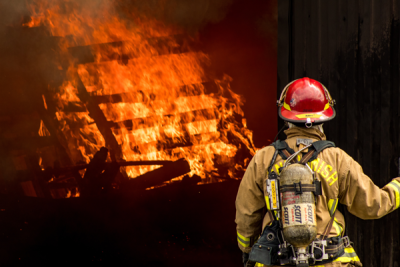Aug 27, 2019
Computing technology has shaped modern offices and retooled how many businesses operate. Now, as technology gets smaller, cheaper, and more connected, jobs that aren’t bound to a desk are seeing similar changes.
A new study from Georgia Tech shows how advanced computing tech worn by firefighters impacts the nature of work for emergency responders, and how front-line firefighters and their commanders view its usefulness.
Researchers sought to establish the effects of a wearable device used by firefighters on the job as well as how companies might better design devices for more physical types of labor.
“For emergency responders, work is carried out with the pressure of someone’s life or property on the line based on how well the job is done,” said Alyssa Rumsey, PhD student in Digital Media, who conducted the study. “Firefighting is unlike office work, which is typically examined in human-computer interaction research; simply put, the stakes are higher.”
The findings showed that the wearable device went through many iterations – originally it was a heads-up display (HUD) that projected situational information onto a firefighter’s mask. This proved too distracting, so then only firefighter’s biometric information was displayed.
Ultimately the tool became a wrist-worn device that gave the biometric information to the on-scene commander, rather than the front-line firefighters, to see the vital signs of the emergency responders in real-time through a web interface.
“Firefighters reportedly didn’t have time to react to the information during the fire suppression because their attention was focused solely on the task at hand,” Rumsey said.
The final device could be used to remotely measure the physical conditions of firefighters in the field. The device was not tested in any live fires but was used extensively on “job duty courses” at two Georgia fire departments where routine training exercises by firefighters in full gear took place. Exercises included a series of obstacles such as ladder runs, hose drags, tire pulls, and crawling.
The device allowed managers to identify personnel who were pushing too hard and those who weren’t pushing hard enough based on heartrate spikes and overall activity during exercises. Supervisors could then call out those individuals and issue them commands either in person or via radio communications.
With overexertion and stress accounting for more than 50 percent of all firefighter deaths, the real-time biometric data potentially allows commanders to assess who on their teams is in trouble and be able to pull them from a scene.
Rumsey found that this clashed with some firefighters’ sense of identity, one that valued getting the job done and putting the safety of others above their own. Some participants rejected the idea of using the wearable tech in a real emergency fire.
As one participant put it: “It would be a way for the chief to see someone’s heart rate, and be like, ‘Yeah I know this person, he's gung ho, he's not gonna quit. It's time to pull him out.’”
Firefighters discussed how overreliance on technology sometimes makes even seasoned pros forget the basics. One participant vividly described an incident where firefighters relied on a thermal imaging camera to view temperatures in a room and assess its safety:
“He scans the room, sees the floors there. Takes off walking through the middle of the living room floor and never went back to the basics of ‘sounding the floor.’ Him and his other two guys with him, fell through the floor and burned to death.”
While the wearable device was viewed favorably in training as a way to improve physical fitness, reduce obesity, and generate comradery, how it might be implemented beyond that was not clear.
“We’ve seen that introducing this technology impacts identity, power dynamics, and organizational structures within fire departments,” Rumsey said. “Smart technology in safety-critical settings, such as fire scenarios, can exacerbate risks rather than lessen them. Understanding an organization is key to implementing technology in some of these more physically demanding jobs.”
Rumsey and co-investigator Chris LeDantec, assistant professor of digital media, published their findings in the paper Clearing the Smoke: The Changing Identities and Work in Firefighting in the Proceedings of the Association for Computing Machinery’s 2019 Conference on Designing Interactive Systems.





